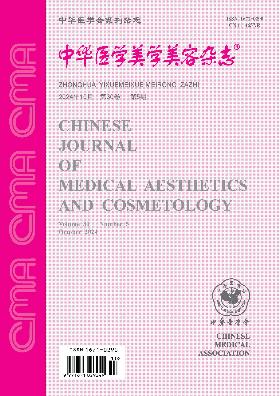CAD/CAM技术及腓骨肌皮瓣辅助重建下颌骨缺损的价值
引用次数: 0
摘要
目的探讨计算机辅助设计与制造技术(CAD/CAM)在腓骨骨肌皮游离皮瓣修复下颌骨缺损中的作用。方法对8例因各种原因导致部分下颌骨缺损的患者进行术前CT扫描,获取待移植下颌骨及腓骨的CT资料。采用CAD/CAM技术打印原始颅骨模型和重建颅骨模型,以及下颌骨和腓骨截骨引导板。采用重建颅骨模型预制钛板,在导板和预制钛板的帮助下进行手术。随访6 ~ 24个月,观察手术效果。结果8例患者中2例因移植体免疫排斥引起皮瓣坏死,1例因术后血糖控制不良导致皮瓣坏死。其余5例在原发部位愈合,腓骨肌皮瓣存活良好。供体和受体均未发生严重并发症。患者满意度高。结论CAD/CAM技术辅助下颌骨再造术具有加快手术进程、缩短手术时间、提高下颌骨截除及腓骨成形的准确性、促进术后功能形态恢复等优点。关键词:下颌骨再造术;腓骨;对于;重建外科手术;计算机辅助设计与制造技术本文章由计算机程序翻译,如有差异,请以英文原文为准。
Values of CAD/CAM technology and assistant reconstruction in mandible defect with fibular musculocutaneous flap
Objective
To explore the role of computer-aided design and manufacturing technology (CAD/CAM technology) in the repair of mandibular defects using the fibular osteomyocutaneous free flap.
Methods
Eight patients with a portion of mandible defect due to various reasons were subjected to preoperative CT scan, obtaining CT data of the mandible and the fibular bone to be transplanted. The original and the reconstructed skull model, as well as the mandible and fibula osteotomy guide plates, was printed using CAD/CAM technology. The titanium plates were preformed using the reconstructed skull model, and the operation was performed with the help of guide plates and a preformed titanium plate. The patients were followed up for 6 to 24 months to evaluate the operation effect.
Results
Two in 8 cases had flap necrosis caused by immune rejection of the implant, and one case had flap necrosis due to poor postoperative blood glucose control. The other 5 patients healed at the primary site and the fibular myocutaneous flap survived well. There were no serious complications in the donor and recepient site. The patients' satisfaction was high.
Conclusions
The reconstruction of mandible with the aid of CAD/CAM technique has the advantages of accelerating the operation process, shortening the operation time, improving the accuracy of mandibular amputation and fibular shaping, promotlng postoperative function and morphology recovery.
Key words:
Mandibular reconstruction; Fibula; Myocutaneous flap; Reconstructive surgical procedures; Computer-aided design and manufacturing technology
求助全文
通过发布文献求助,成功后即可免费获取论文全文。
去求助
来源期刊
自引率
0.00%
发文量
4641
期刊介绍:
"Chinese Journal of Medical Aesthetics and Cosmetology" is a high-end academic journal focusing on the basic theoretical research and clinical application of medical aesthetics and cosmetology. In March 2002, it was included in the statistical source journals of Chinese scientific and technological papers of the Ministry of Science and Technology, and has been included in the full-text retrieval system of "China Journal Network", "Chinese Academic Journals (CD-ROM Edition)" and "China Academic Journals Comprehensive Evaluation Database". Publishes research and applications in cosmetic surgery, cosmetic dermatology, cosmetic dentistry, cosmetic internal medicine, physical cosmetology, drug cosmetology, traditional Chinese medicine cosmetology and beauty care. Columns include: clinical treatises, experimental research, medical aesthetics, experience summaries, case reports, technological innovations, reviews, lectures, etc.

 求助内容:
求助内容: 应助结果提醒方式:
应助结果提醒方式:


